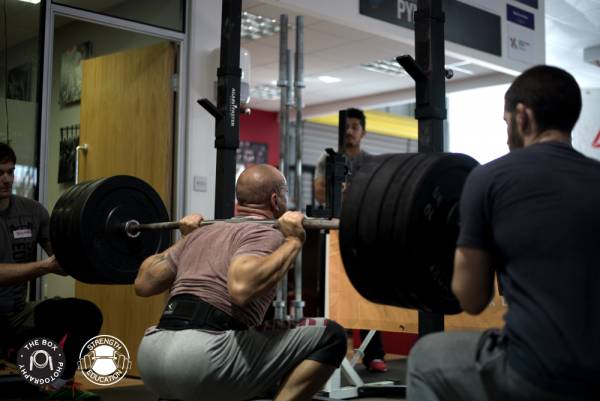Winter means it’s time in the Northern Hemisphere to knuckle down and get some decent training through the cold months. So today, I will be reviewing all the components you need to put a successful winter training plan together.
RELATED: Why Heavy Lifting Is the Best Winter Activity for Cyclists
The Components of Successful Fitness
First, let’s look at the components of fitness. These include:
- Cardiovascular fitness
- Muscular fitness
- Body composition
These are the three aspects to consider when formulating the needs of your training plan. It’s best to concentrate on one of these at a time, rather than try to everything all at once.
Cardiovascular Fitness
This is how well your heart, lungs, and circulatory system are able to deliver oxygen, utilize oxygen, and remove waste products. A good measure of this is how long a particular activity can be sustained at a particular intensity. A time trial or threshold test with a power meter could be a good way to assess your cardiovascular fitness.
RELATED: How to Use a Power Meter in a Team Time Trial
Muscular Fitness
This is about how well you are able to move and apply power. In the case of a cyclist, this would mean to repeatedly rotate the pedals in an effective way. A pedal stroke analysis would assess the effectiveness of the athlete’s pattern of muscle recruitment.
“A person concentrating on sprints or mountain biking would be more interested in applying higher levels of power for a shorter duration, as opposed to the goals of a long-distance time-trial specialist.”
Strength and endurance would be assessed by how much power can be sustained for different lengths of time. A person concentrating on sprints or mountain biking would be more interested in applying higher levels of power for a shorter duration, as opposed to the goals of a long-distance time-trial specialist.
Since the brain ultimately controls the way we move, I would add a neurological component to this type of fitness. The correct recruitment sequence of large quantities of muscle fibers will allow more power to be generated at the back wheel where it matters.
Body Composition
This is about the quantity and location of lean and fatty tissue stored in the body. Excess fatty tissue will add weight, which can make it harder to effectively climb hills. In addition, an excess mass of lean tissue that is not beneficial to cycling will also make it more difficult to climb hills. Very strong arms are not going to be as useful as very strong legs when it comes to cycling.

The Components of Successful Training
When it comes to training, there are four basic principles that need to be applied:
- Specificity
- Overload
- Adaptation
- Progression
Specificity
Randomly cycling around, although enjoyable, is not specific. It is unlikely that any performance improvement (apart from general mood, which may be a training goal in itself) will result.
“If training needs to help improve acceleration and short-term speed, then training should be representative of this type of activity.”
If training needs to help improve acceleration and short-term speed, then training should be representative of this type of activity. If skill or technique needs to be developed, then training should be based around the desired skill(s). It was shown some time ago that there was little correlation between cycling and swimming performance, so your training activity needs to be representative of the actual cycling discipline that is to be developed.
Overload
This means presenting the body with a situation where the demands put upon it are more than what it is used to. If improvements in power are desired, then ways of putting the body in situations where more power has to be developed should be used.
RELATED: Understanding Overloading, Overreaching, and Overtraining (Video)
This might include work on a cycle ergometer, hill climbs, or resistance work in the gym that emulates cycling activity. It is only when sufficient levels of overload are applied that the body will get stronger or be able to ride for long periods without fatigue.

Adaptation
This is the desired outcome of our training. This occurs when we rest after a session (or sessions) of overload. But repeated overload without a break is more likely to result in declining performance than improvement. During recovery or rest days, the body repairs itself to a state where it is fitter or stronger than before.
RELATED: The 7 Laws of Training According to Dr. Fred Hatfield
There are many ways of alternating overload training and adaptation days depending upon your circumstances. Some people schedule one day of training and one day of recovery, back and forth. Others increase the level of overload by training for two days on and then taking one day of recovery. Or three days on and two days recovery, etc. Depending on your circumstances and goals, one schedule may be better for you than another.
Progression
This involves the gradual increase of the training stimulus over a period of time. Small steps are taken to incrementally build up to a peak in results. Attempting to do too much too soon or training infrequently will likely result in injury. Whereas, gradually developing your skills and power will lead to sustainable results.

Enter your current training into the table above. Do you have all of the components of a successful training plan in place?
Photos 1 and 3 courtesy of Shutterstock.
Photo 2 courtesy of Strength Education.






